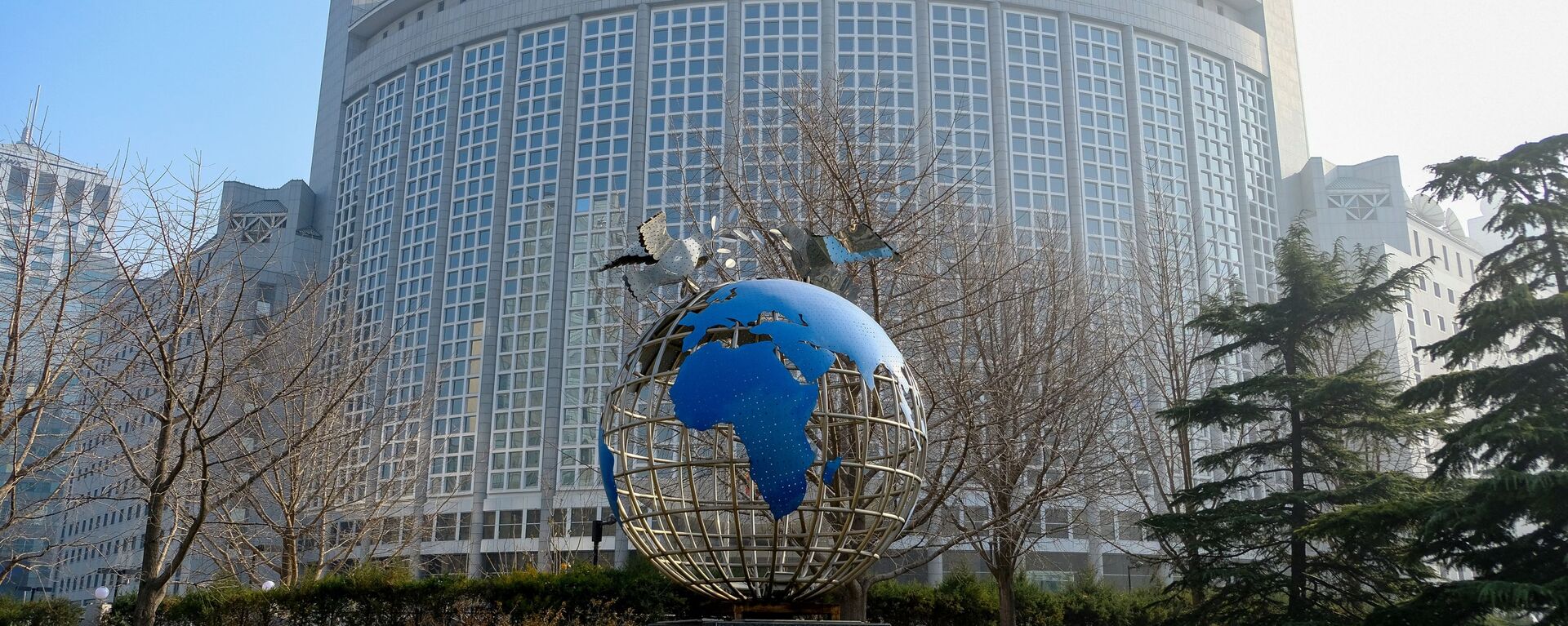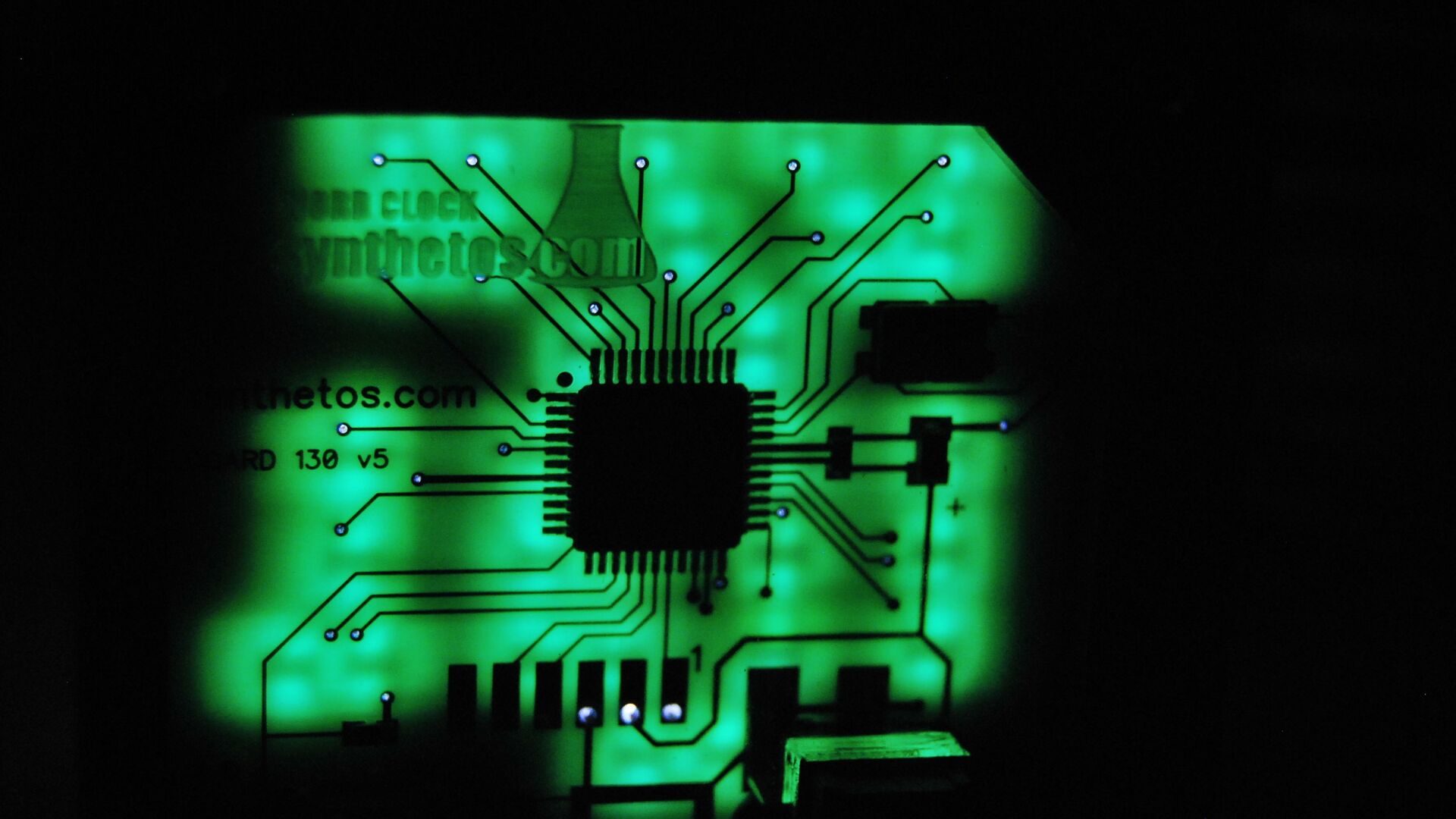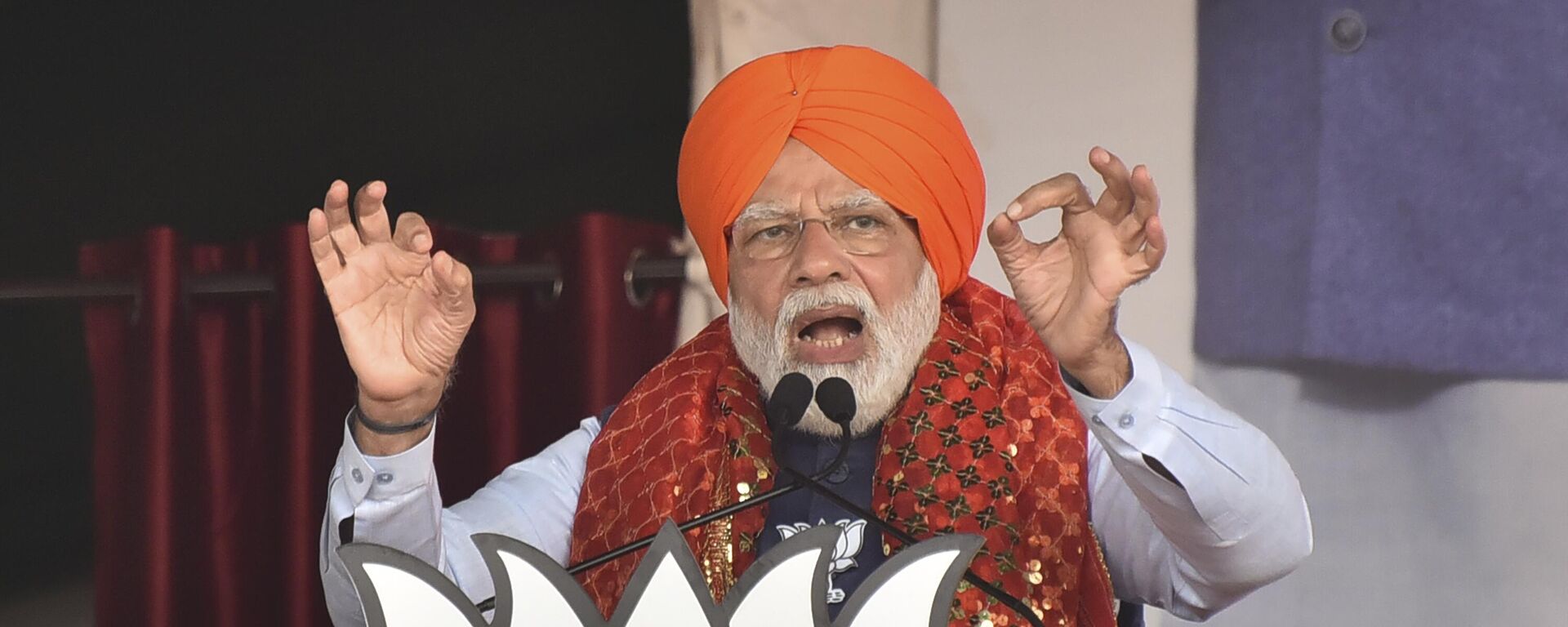https://sputnikglobe.com/20220811/how-taiwan-war-hysteria-china-trade-war-prompted-us-to-splurge-280-billion-on-microchip-industry-1099485489.html
How Taiwan War Hysteria Prompted US to Splurge $280 Billion on Microchip Industry
How Taiwan War Hysteria Prompted US to Splurge $280 Billion on Microchip Industry
Sputnik International
Under the $280-billion act, Washington will invest around $52.7 billion in microchip production to attempt to keep pace with China, as the two countries... 11.08.2022, Sputnik International
2022-08-11T16:22+0000
2022-08-11T16:22+0000
2022-08-11T16:35+0000
analysis
us
china
joe biden
bill
competition
chips
https://cdn1.img.sputnikglobe.com/img/107918/74/1079187450_0:105:3059:1826_1920x0_80_0_0_4f5c8bb3cbc58f5f2a0b4739a510319f.jpg
The Chips Act is "a pre-cursor to further escalations with China in order to flip this dynamic, knowing that the US will not be able to adequately defend Taiwan,” US-based financial commentator Tom Luongo tells Sputnik, referring to US-Chinese tensions over Taipei, which escalated after House Speaker Nancy Pelosi’s visit to the island last week.He ventured to say that “it may even have been the reason” Pelosi visited Taiwan “to ratchet up the tension and ensure the bill’s passage,” adding that “at this point, things are so murky, trying to divine what anyone’s motivations are on Capitol Hill, other than surviving the mid-terms, is a fool’s errand.”Earlier this week, US President Joe Biden signed a bipartisan bill that aims to boost the country’s competitiveness with China by investing $280 billion in domestic semiconductor manufacturing and science research.Dubbed the Chips and Science Act, the bill includes more than $52 billion for US companies producing computer chips, as well as billions more in tax credits to encourage investment in semiconductor manufacturing.The document also stipulates allocating tens of billions of dollars to fund scientific research and development and to spur the innovation and development of other US technology.The Chips Act is "a clear departure for US industrial policy to provide subsidies and incentives to a specific industry. The compulsion now is driven by geopolitical tensions (US-China trade war, China-Taiwan-US confrontation), strategic significance of chips in manufacturing across industries (particularly post COVID) and its applications for defence and national security concerns," says Dr. Raju.The professor explains that the purpose is to attact investment from major chip manufacturers and establish semiconductor fabrication plants in the United States."The 'Fab less' model that the US followed in the past made US gain a dominant market position in the R&D, IP and design capability of the value chain of semiconductor industry but resulted in less than 12% in wafer fabrication (capital intensive) and 2% in Assembling, Packaging &Testing (Capital & labour intensive) (SIA, 2021). US share in global installed capacity of semiconductor industry is less than 12%, while the global sale of semiconductor sales (Fab less plus IDMs) is 48%. As a result, growth in installed capacity of US was outpaced by Asian countries," Dr. Raju explains.Meanwhile, Luongo says that the bill “will have an effect on semiconductor production” in the US, but “the question is whether it is cost-effective to actually do it.”Luongo describes the bill as “just a start” in terms of the US’ effort to get the better of China in the race to dominate the high-tech sector.“The turnaround will take time certainly, there is no easy fix here (…) If the US is serious about gaining real market share and competitiveness in manufacturing, then a lot of roadblocks currently in place will need to end,” the commentator notes.According to him, “the real problem now is that the US is going hyper-belligerent to maintain its control when it should have looked inward to solve its internal problems years ago. [Former US President Donald] Trump tried and failed to make meaningful reforms.”
https://sputnikglobe.com/20220810/us-new-chips-law-will-undermine-global-supply-chains-chinese-foreign-ministry-1099449856.html
https://sputnikglobe.com/20220704/modi-vows-to-develop-india-as-chip-hub-as-govt-sets-300bn-target-in-electronics-manufacturing--1096948833.html
china
Sputnik International
feedback@sputniknews.com
+74956456601
MIA „Rossiya Segodnya“
2022
Sputnik International
feedback@sputniknews.com
+74956456601
MIA „Rossiya Segodnya“
News
en_EN
Sputnik International
feedback@sputniknews.com
+74956456601
MIA „Rossiya Segodnya“
Sputnik International
feedback@sputniknews.com
+74956456601
MIA „Rossiya Segodnya“
us, china, joe biden, bill, competition, chips
us, china, joe biden, bill, competition, chips
How Taiwan War Hysteria Prompted US to Splurge $280 Billion on Microchip Industry
16:22 GMT 11.08.2022 (Updated: 16:35 GMT 11.08.2022) Under the $280-billion act, Washington will invest around $52.7 billion in microchip production to attempt to keep pace with China, as the two countries compete for dominance in the high-tech sector.
The Chips Act is "a pre-cursor to further escalations with China in order to flip this dynamic, knowing that the US will not be able to adequately defend Taiwan,” US-based financial commentator Tom Luongo tells Sputnik, referring to US-Chinese tensions over Taipei, which escalated after House Speaker Nancy Pelosi’s visit to the island last week.
"The US will defend Taiwan through a number of hybrid war tactics, including sanctions and tariffs as well as monetary policy, while simultaneously making like they can and will defend Taiwan militarily. For now, Taiwan is important, this bill is saying we need to ensure it is less important. This vulnerability, in my opinion, was deliberately pursued by forces within our government to lead us to this unfolding crisis. We always wanted a casus belli against China. Taiwan is the perfect trip wire for further war," Luongo explains.
He ventured to say that “it may even have been the reason” Pelosi visited Taiwan “to ratchet up the tension and ensure the bill’s passage,” adding that “at this point, things are so murky, trying to divine what anyone’s motivations are on Capitol Hill, other than surviving the mid-terms, is a fool’s errand.”
Earlier this week, US President Joe Biden signed a bipartisan bill that aims to boost the country’s competitiveness with China by investing $280 billion in domestic semiconductor manufacturing and science research.
Speaking at the signing ceremony outside the White House on Tuesday, Biden claimed that “the future of the chip industry is going to be made in America,” adding, “Today is a day for builders. Today America is delivering.”
Dubbed
the Chips and Science Act, the bill includes more than $52 billion for US companies producing computer chips, as well as billions more in tax credits to encourage investment in semiconductor manufacturing.

10 August 2022, 12:00 GMT
The document also stipulates allocating tens of billions of dollars to fund scientific research and development and to spur the innovation and development of other US technology.
"Trade tensions with China and the war hysteria [around] Taiwan will make US susceptible to disruptions in chip availability that can have wide ranging disturbances across industries," says Dr. Sunita Raju, a professor of economics and Chairperson of the Indian Institute of Foreign Trade. "While the CHIPS Act is an effort to maintain technology leadership position of US, it is also an effort to stem the US lagging behind Taiwan, Korea and China in recent times in chip manufacturing."
The Chips Act is "a clear departure for US industrial policy to provide subsidies and incentives to a specific industry. The compulsion now is driven by geopolitical tensions (US-China trade war, China-Taiwan-US confrontation), strategic significance of chips in manufacturing across industries (particularly post COVID) and its applications for defence and national security concerns," says Dr. Raju.
The professor explains that the purpose is to attact investment from major chip manufacturers and establish semiconductor fabrication plants in the United States.
"The 'Fab less' model that the US followed in the past made US gain a dominant market position in the R&D, IP and design capability of the value chain of semiconductor industry but resulted in less than 12% in wafer fabrication (capital intensive) and 2% in Assembling, Packaging &Testing (Capital & labour intensive) (SIA, 2021). US share in global installed capacity of semiconductor industry is less than 12%, while the global sale of semiconductor sales (Fab less plus IDMs) is 48%. As a result, growth in installed capacity of US was outpaced by Asian countries," Dr. Raju explains.
Meanwhile, Luongo says that the bill “will have an effect on semiconductor production” in the US, but “the question is whether it is cost-effective to actually do it.”
“It was a strategic mistake to offshore all of our chip production. For everything outside of the bleeding edge in power management – phones, data centers, etc. – older technology is just fine. Remember that most of these big chips are designed here in the US, manufacturing happens overseas. […] The production of most of your iPhone happens here in the US, the assembly of the parts happens in China. This point is lost in all of the noise,” he points out.
Luongo describes the bill as “just a start” in terms of the US’ effort to get the better of China in the race to dominate the high-tech sector.
“The turnaround will take time certainly, there is no easy fix here (…) If the US is serious about gaining real market share and competitiveness in manufacturing, then a lot of roadblocks currently in place will need to end,” the commentator notes.
He went on to argue that the global market for chips currently looks “the way it does because of US technology barriers through trade deals, sanctions and the like.” Luongo adds that US foreign policy “will now hinge on continuing to try and delay and slow down the rise of competition” and that “being pushed out of markets like central Asia and falling behind in Africa, etc. isn’t a good sign.”
According to him, “the real problem now is that the US is going hyper-belligerent to maintain its control when it should have looked inward to solve its internal problems years ago. [Former US President Donald] Trump tried and failed to make meaningful reforms.”




